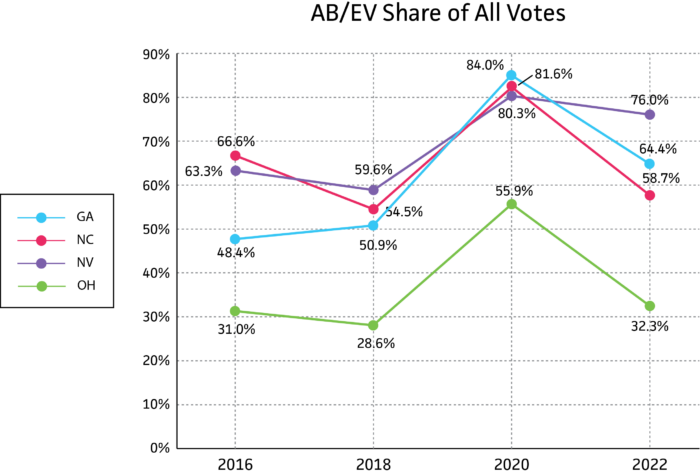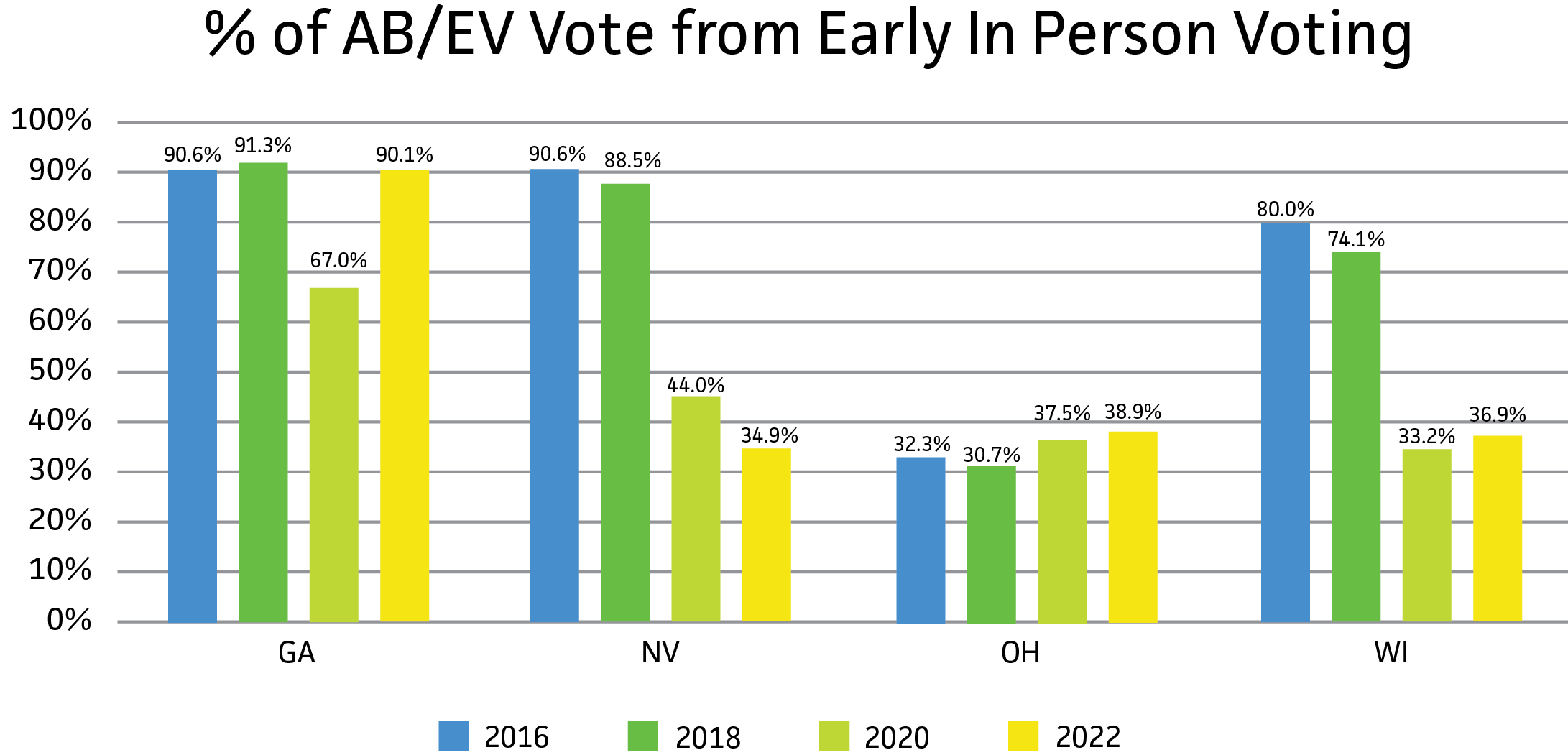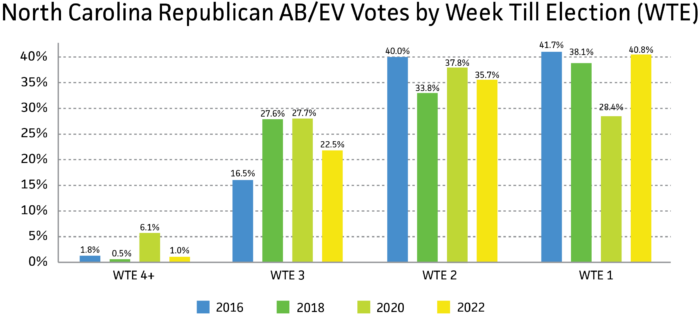Absentee and early voting (AB/EV) has become a vital component of campaign efforts. Data Trust continually enhances the processes and speed of collecting AB/EV files for the political ecosystem. With the largest database of historical AB/EV records, Data Trust provides clients with unique targeting opportunities on how and when voters cast their ballots. As absentee ballots are distributed in a few weeks, we analyzed key trends to understand shifting voter behaviors and preferences, offering deeper insights into the electorate’s dynamics.
Total Vote Share from AB/EV in 4 Key Target States
Analyzing AB/EV trends from 2016 and 2018 (pre-COVID) compared to 2022 (post-COVID) reveals significant shifts in voting behaviors. Understanding these patterns is crucial for predicting voter engagement and participation in future elections.

• Nevada: The AB/EV share of the vote in 2022 was slightly less than in 2020, suggesting that the 2024 trends are likely to align with, if not surpass, those seen in 2020.
• Ohio: The AB/EV share remained relatively stable at 32.3% in 2022, closely matching 31.0% in 2016 and 28.6% in 2018. This consistency indicates a reversion to pre-COVID voting behaviors.
• Georgia and North Carolina: Both states experienced a slight increase in AB/EV voting from 2018 to 2022, though not as significant as Nevada. This trend implies that the 2024 AB/EV vote share in these states will likely mirror their 2022 numbers.
Trends in In-Person Early Voting
Understanding the breakdown in voting type is crucial for targeting and turnout. Below is a breakdown of how in-person early voting has changed over time in Georgia, Nevada, Ohio, and Wisconsin

• Nevada and Wisconsin: Both states have experienced a steep decline in in-person early voting since COVID-19, with a majority of voters now preferring to vote early by mail.
• Ohio: Ohio has traditionally been an absentee mail-heavy state, and this trend shows no signs of changing in the future.
• Georgia: In 2020, many voters shifted away from in-person early voting, but in 2022, the trend returned to pre-COVID levels, which is expected to hold in 2024.
Share of North Carolina Republican AB/EV Vote by Week Till Election (WTE)
Understanding when voters will return their ballots in the final week of the election is crucial. Below is an example of when Republicans have been turning in their ballots in North Carolina.

• Despite being one of the earlier states to send out ballots, a significant majority of North Carolina Republicans wait until the last two weeks to turn in their AB/EV ballots.
• Outside of 2020, the largest share of Republicans return their ballot in 1 week before the election, showing a stable trend of voters taking advantage of early voting opportunities.
The analysis of absentee and early voting trends reveals evolving voter behaviors across key states. As we approach the upcoming election, understanding these trends can provide valuable insights into voter engagement and participation. Each state’s unique patterns highlight the importance of tailored strategies in voter outreach and campaign efforts. If you’d like to learn more or find out how this invaluable data can help your campaign efforts, please reach out to us here.